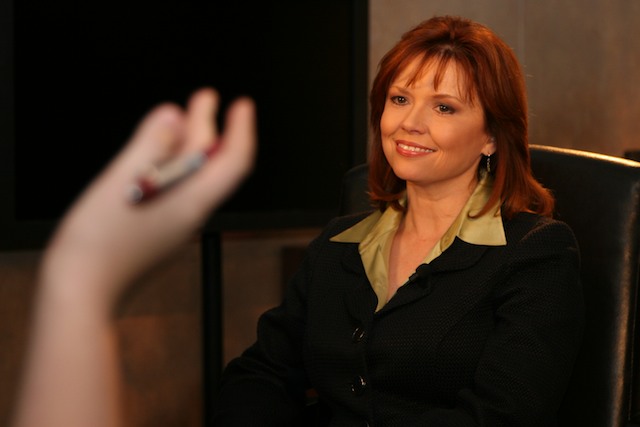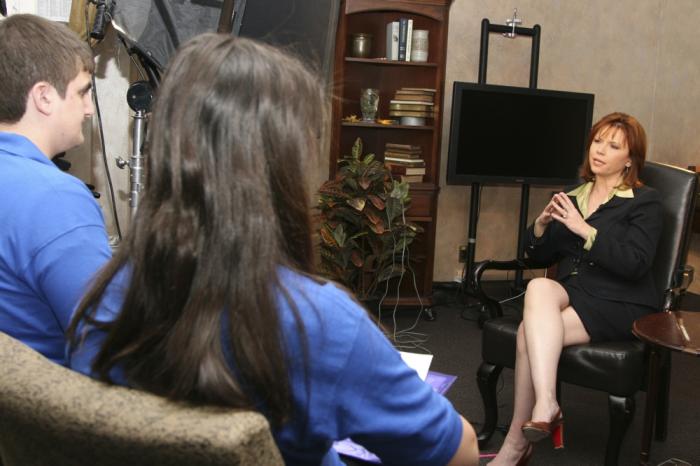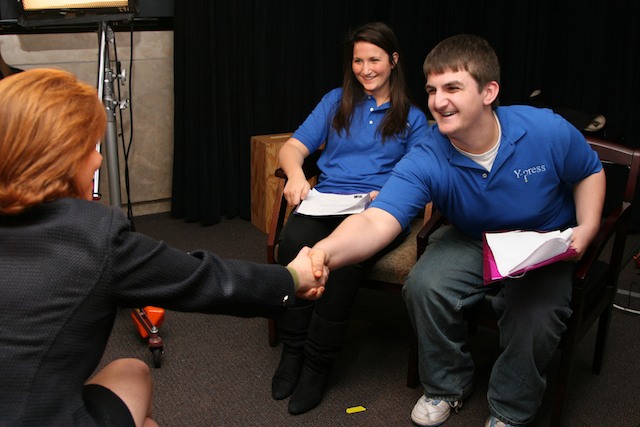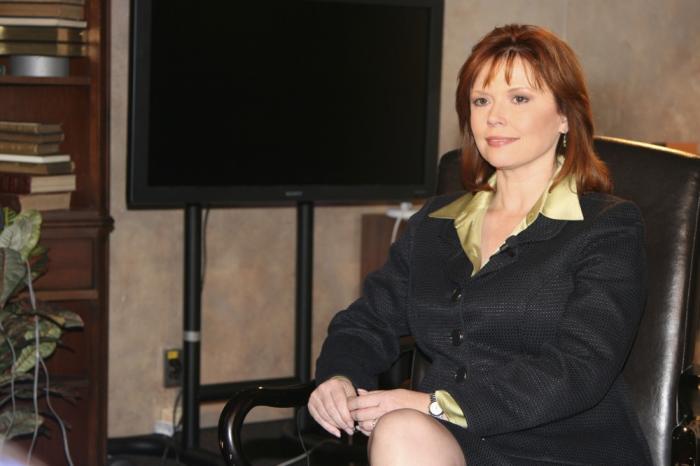Power of the Question
Lesson 2: Followup Questions and the Power of the Pause
WARM-UP ACTIVITY
O’Donnell refers to follow-up questions as a high form of questioning. Before watching video two, ask students to discuss with a partner what they think high form of virtue or high form of flattery might mean. After several minutes, ask them to talk about how high form might relate to questions. Are there types of questions that are sophisticated and require practice and higher level thinking skills? Have several students share their ideas with the class.
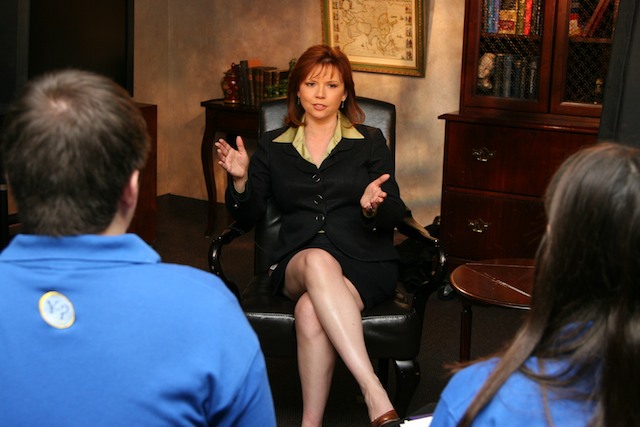
CONCEPT FORMATION
Have students view video two. O’Donnell discusses follow-up questions and the power of a pause, which can allow an interviewee time to think. After viewing this segment, discuss O’Donnell’s key points and ask the class why they believe follow-up questions might be so difficult to ask.
As a class, use the Great Books tutorial on follow-up questions to gain a better understanding of follow-up questions.
As an introduction to follow-up questions, demonstrate how the Great Books site works; and as part of the introductory exercise ask students to volunteer answers to ensure that students understand how the site analyzes responses.
Next ask the class to divide into small groups and try several tutorial examples. Keep tally of the responses and how many times the groups close to the suggested question.
For each of the following exchanges, write a follow-up question you might ask, taking into account both the participant’s response and the leader’s question.
Note: There is no single “best” follow-up question for any of these situations. Many different follow-up questions can be effective in the exact same situation. The skill of leading Shared Inquiry Discussion is in asking consistently effective follow-ups.
1.
Leader: Why does Jack trade his cow for the five beans?
Student: He kind of has to, because he’s a snotty kid.
Your follow-up question:
Click here for analysis.
Next have the groups select a fairy tale with which they are familiar and fashion several follow-up questions. In small groups peer critique the questions.
HOMEWORK
For homework, ask each student to listen to a TV news interview and write a short summary of the report and draft three follow-up questions they wished the reporter would have asked.
APPLICATION
Ask several students to share their homework and talk about why the reporter may not have asked the questions. Then ask one student to role play the interviewer and another interviewee for one of the news story. How might the story be revised with the additional questions and answers?
O’Donnell says that she knows in advance which follow ups she will ask because before the interview she prepares a beginning, middle and end for her questions. One tip she suggests is thinking about a news event and working backwards. For example, if she is going to interview someone about a subway bombing, she’ll compile what she already knows and then work to outline what she doesn’t know: What do you know and what do you need to know? She suggests dissecting what you already know or think you know will help in formulating questions.
Ask students to use the TV interview from their homework to formulate questions for an interview, using O’Donnell’s technique. Prior to the activity have students design a simple rubric for assessing their questions.
OPTION:
Ask students when in history a follow-up question could have changed a situation as we know it. For example, after 9/11, dogged reporters requesting to proof of weapons of mass destruction. At the time those questions were deemed unpatriotic. How might answers have changed our involvement in Iraq? Apply the concept of follow-up questions to a recent social studies or literature lesson.
Ask each student to select a literary character or historical icon and list follow-up questions that might have changed the course of history or the direction of a novel.
Working with a partner, ask the pairs to develop five follow-up questions for a prominent character in a social studies unit. Ask students to determine a situation in which each question might be posed. Use a graphic organizer, like the sample below, to help students organize their questions. After students have completed, peer critique the questions and offer suggestions for revisions.
| Individual | Follow-up Question | Situation |
|---|---|---|
| Teddy Roosevelt | Antiquities Act | |
Following a revision workshop, individual groups can share how and why they changed, strengthened or adapted their questions. In a sentence or two, ask students to explain what they did to improve each question and how they believe their changes served to enhance the questions.
Other Resources for Followup Questions Activities
• Follow-up questions we wish Larry King asked Gordon
• Teaching ideas for the ESL classroom
• The value of follow-up questions
CONCEPT FORMATION
Introduce O’Donnell’s suggestion that sometimes a follow-up question isn’t needed, but rather a pause in the questioning would allow the interviewee time to think. Are there reporters who use this technique effectively? As a class, discuss who might fit this style.
APPLICATION
Research how culture makes a difference when conducting interviews (eye contact, formality). Pausing, also, can be cultural. Early in 2011, “Time” magazine reported on pauses as awkward and a science blog talks about differences in culture. Ask the class what value they see in pausing rather than continuing with the next question. Are there cultural differences to take into consideration? (This is not a technique you will often witness in an actual interview unless it is live or the reporter thinks the audience needs to see the interviewee’s reaction.) Is a pause something you can prepare for?
Ask students to research the effect of pauses, using one of two recent studies below; write a short essay on what they believe a pause could do to a reporter’s line of questioning.
• Pregnant pauses and rapid-fire- how do different cultures take turns to talk?
OPTION:
After more than 50 years of acting, Vanessa Redgrave understands the art of pausing and listening. In this article, Redgrave uses pausing in her role as Miss Daisy to listen, but also to avoid a reporters queries. This is her first return to Broadway since the death of her daughter, Natasha Richardson. Discuss other ways that pauses are effective and have students write a short piece about when pausing was personally important. Another possible activity is asking students to observe a teacher-led discussion and note if a teacher pauses after a question is asked. If so, how long is the pause? Does the teacher rush to fill the silence or does he/she give time for students to think and then respond? Student might count the number of seconds of the pause.
WRAP-UP
Follow-up questions are hard to plan for. They take good listening and notetaking to be effective. Discuss ways to improve both areas and add suggests to the class K-W-L chart.
OPTION A:
An exercise to improve listening skills is to ask questions throughout a conversation: Asking the right questions at the right time is key to learning more about the topic. If you ask, people will know that you are listening to what they are saying, you will keep a lively conversation, prevent any possible misunderstandings and most importantly, you will develop your listening skills.
As practice, ask students to set a goal of asking a couple of follow-up questions in a classroom discussion. Three to six questions is a reasonable number to start with. This can become a 10-minute periodic class exercise.
OPTION B:
Pairs of students receive an index card identifying one characteristic of a good interview. Give the class five to seven minutes to create a scenario that will demonstrate a violation of the assigned rule. The student pairs take turns enacting their scenarios in front of the class. One student plays the role of interviewer and the other, the narrator. The class guesses which interview rule has been violated and the enactors tell them if they are correct.
EXTENSION
OPTION A:
Have students write an essay about the role of the media and need for reporters to ask follow-up questions.
OPTION B
: Pass out the following writing prompt to students: “All our knowledge results from questions, which is another way of saying that questioning is our most important intellectual tool,” by Neil Postman. How do questions improve understanding?
